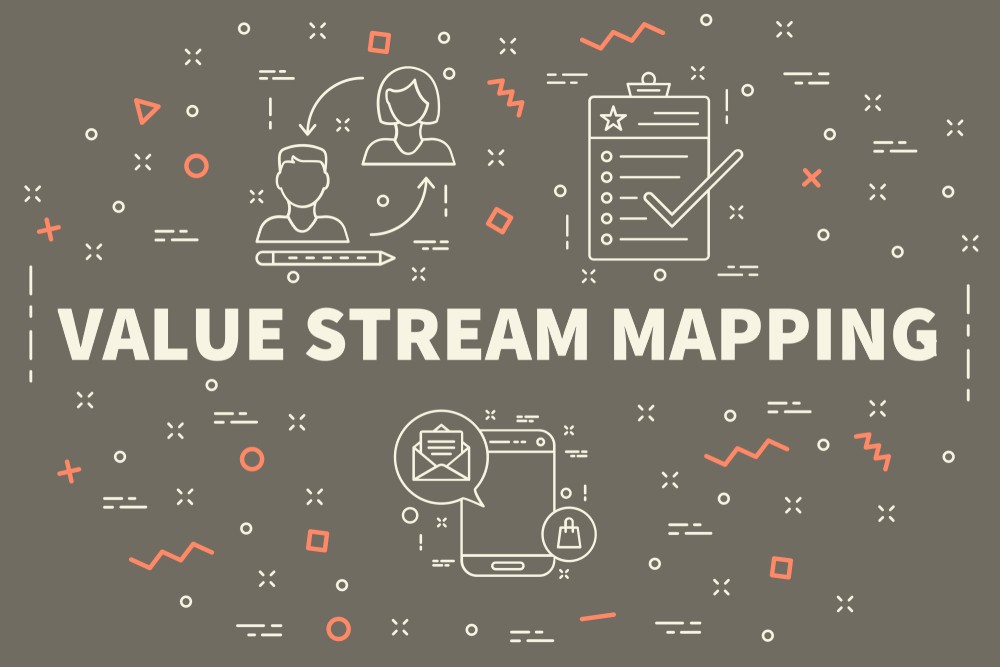4 Key Benefits of Value Stream Mapping

Anyone familiar with Lean manufacturing’s core principles knows the importance of value stream mapping. Creating an end-to-end visualization of the production flow — complete with all variables that contribute to it — opens the door for scrutinization.
Are things as efficient as they should be? Are there opportunities to cut back on waste? How can we solve X, Y, or Z challenge as it relates to throughput or output? A well-mapped value stream is the first step to answering these questions and dozens of others.
The purpose of value stream mapping
Value stream mapping involves diagramming current and ideal workflows regarding a particular production line. It includes all departments, teams, and processes in one easy-to-read visual aid, so project managers can better identify key junctures and contributors across the production process. With this knowledge, quality engineers and operations managers can investigate new ways to make their operations more efficient.
A value stream map sets the stage for a more informed approach to optimize operations. From identifying waste to understanding maintenance needs, the value stream map helps teams investigate solutions based on a Lean-driven problem or hypothesis.

The key benefits of value stream mapping
A value stream map enables project managers — and all involved departments and teams — to visualize ways to make operations more efficient. Value stream mapping (VSM) helps organizations identify and eliminate waste, making processes more efficient. It visualizes the entire production process, enabling teams to focus on steps that add value. By aligning cross-functional operations and offering a clear view of production, VSM boosts efficiency and optimizes the customer experience. More on these benefits below:
- Identifying (and eliminating) waste. A thorough value stream map identifies waste throughout the entire production process and contextualizes that waste within the scope of the operation. Waste may include materials, labor, time, and more.
- Making processes more efficient. By enabling project managers to identify takt time, lead time, and cycle time at each step of the manufacturing process, companies can determine where value is added (or not), allowing for greater efficiency.
- Aligning cross-functional operations. Value stream mapping allows companies to take a macro approach to their operations, bringing cross-functional teams together. Everyone from upper and middle management to administration, sales, and logistics teams can take part in value stream mapping. It creates a shared understanding of current processes while focusing on activities that generate more revenue.
- Getting a clearer view of production. Value stream mapping gives teams a look at the current state of production to determine where practices can be eliminated while maintaining product quality. This is especially important in environments where the value stream may change, or demand may fluctuate.
Putting value stream insights to work
Value stream mapping provides actionable information about production. When teams understand each step of the workflow, they can analyze their processes in depth and adopt practices that add value while eliminating those that don’t. By using these important insights, project managers can make continuous improvements that boost productivity without sacrificing quality.
